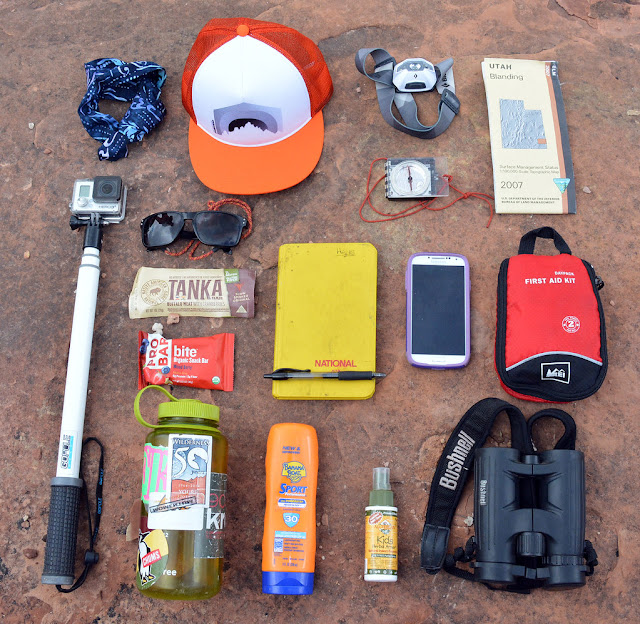Outdoor Fitness Fun: Gear for hiking, climbing, and trail running
In a fast-paced world, finding ways to stay active while enjoying the outdoors is crucial Hiking, climbing, and trail running are examples of outdoor fitness activities that not only present physical challenges but also foster a sense of connection with the natural world. To fully enjoy these activities, it is best to have the right gear.
Introduction to Outdoor Fitness
Before getting into the specific gear required for each activity, it's essential to understand the broader significance of outdoor fitness. These activities provide a respite from the daily hustle and bustle, providing moments of tranquility and adventure. Trail running improves cardiovascular fitness, climbing tests your physical strength, and hiking allows you to explore natural trails.
Hiking Gear
A. Footwear
Selecting appropriate hiking shoes is crucial.
1. Hiking Boots: Sturdy boots provide ankle support and protection on rough terrain.
2. Trail Shoes: Light and flexible, ideal for less demanding trails.
B. Backpack:
Convenience and comfort are ensured by a carefully chosen backpack
1. Capacity: Choose a size based on the length of your hike and what you need to carry.
2. Comfort: Look for hip belts, rear ventilation, and padded shoulder straps.
3. Characteristics: Several sections, customizable hydration, and simple external fasteners.
C. Clothing
Layering is crucial in a number of situations:
1. Base Layer: Moisture-wicking fabric keeps sweat away from the skin.
2. Insulating layer: adds warmth in cold weather. A fleece or synthetic jacket works well.
3. Outside Shell: Wind and rain are kept at bay by this breathable, waterproof jacket.
D. Navigation Tools:
Tools to keep you on track:
1. Map and Compass: Traditional Navigation Tools for Route Planning and Orientation.
2. GPS device: Helpful for tracking a precise location, particularly in uncharted territory.
E. Hydration:
It is crucial to stay hydrated while hiking:
1. Water Bottle: Durable and easy to carry. Consider mixing recycled bottles.
2. Hydration Reservoir: Hands-free hydration with a bladder and drinking tube in your backpack.
F. Snacks:
Snacks that are portable and high in energy keep you going:
1. Nuts and seeds: Rich in protein and good fats for sustained energy.
2. Dried fruits: Quick-growing natural sugars that are natural.
3. Energy bars: quick to prepare, high in protein and carbs.
G. First aid kit:
A compact kit for minor injuries:
For cuts and scrapes, use band-aids and antiseptic wipes.
1. Tape and gauze: For large blisters or wounds.
2. Pain relievers: Ibuprofen or acetaminophen for minor pain.
H. Protection from the sun:
It is critical to protect against ultraviolet radiation:
1. Sunscreen: SPF 30 or higher to protect exposed skin.
2. Sunglasses: Use polarized lenses to shield your eyes from glare.
3. Hat: Shades with wide brims for your neck and face.
I. Emergency Gear
Always be ready for the unexpected:
1. Whistle: Signal for help in an emergency.
2. Emergency blanket: Preserves body warmth in the event of an accident.
3. Multi-tool: handy for minor repairs or gear adjustments.
Each of these items contributes to a safe and enjoyable hiking experience. Sort your preferences based on the duration, terrain, and conditions of your trip.
Climbing Gear:
A. Harness:
1. Comfort Fit: Look for a harness that fits snugly without being restrictive.
2. Adjustability: Adjustable leg loops and waist belts for a customizable fit.
3. Gear Loops: Lots of loops for attaching climbing equipment.
B. Rope:
1. Dynamic Rope: Designed to stretch to absorb the force of a falling climber.
2. Length and Diameter: Choose the appropriate length and diameter based on climbing and your experience level.
C. Carabiner and Quickdraw:
1. Locking Carabiner: Essential for anchoring and securing ropes and equipment.
2. Quickdraws: Two non-locking carabiners connected by a sewn-in sling for cutting into bolts or anchors.
D. Helmet:
1. Protection: Prevents the head from hitting rocks or falling debris.
2. Fit: Ensure a snug fit without being uncomfortable or restrictive.
E. Climbing Shoes:
1. Fit: Snug fit without being painfully tight. Shoes should be precise for better grip and control.
2. Types: Different shoes cater to different climbing styles—choose based on your preferences.
Chalk Bag:
3. Absorbency: Retains chalk to keep your hands dry for better grip.
4. Attachment: Attach to your harness for easy access while climbing.
F. In the case of the device:
1. Assisted Braking: Allows the climber to descend and catch falls in a controlled manner.
2. Versatility: Some devices are suitable for lead and top-rope belaying.
Each piece of climbing gear serves an important purpose to ensure safety and efficiency while climbing. Make sure your gear is properly maintained and checked regularly for signs of wear and tear. Safety should always be the top priority on a climbing adventure.
Trail Running Gear:
A. Trail Running Shoes:
Grip and Traction: With aggressive tread for traction, these are specially made for a variety of terrains.
Protection: Provides stability and protects against rocks and roots.
Fit: For optimal foot movement, the fit should be snug but not too tight.
B. Moisture-wicking clothing:
Base layer: A shirt made of synthetic or merino wool that draws perspiration away from the skin.
Breathable leggings or shorts will keep you dry and allow for unrestricted movement.
Weather Protection: Consider a light, water-resistant outer layer for unpredictable weather.
C. Hydration pack or belt:
1. Capacity: Choose based on distance and your hydration needs during the run.
2. Comfort: Breathable material and adjustable straps ensure a comfortable fit.
3. Accessibility: Easy access to hydration while on the move.
D. Energy Gels or Bars:
1. Quick Energy: Designed for instant energy, usually with carbohydrates and electrolytes.
2. Variety: Experiment with different flavors and types to find what works best for you.
3. Portability: Easy to carry and eat while running.
E. Headlamp:
1. Visibility: Provides illumination for early morning or evening runs.
2. Brightness and Beam Distance: Choose based on the terrain and how much light you need.
F. Watch or GPS device:
1. Tracking: For performance analysis, track distance traveled, speed, and route.
2. Navigation: This helps you find your way on unfamiliar trails or monitor your progress.
Every component is essential to guaranteeing a successful and enjoyable trail running experience. Check your equipment well in advance and make adjustments according to your preferences and the conditions of the particular trail. Happy hiking!
Tips for choosing the right gear
Choosing outdoor fitness gear involves evaluating several factors. While budget-friendly options exist, investing in high-quality gear can increase performance and durability. Always prioritize proper fit and comfort, as ill-fitting gear can hinder enjoyment and safety.
Advantages of outdoor fitness gear
The right gear not only improves performance but also ensures safety in challenging environments. It enhances the entire outdoor experience, pushing individuals to their limits while reveling in the natural beauty around them. Additionally, engaging in outdoor fitness activities has proven health and mental well-being benefits.
Conclusion
Equipping yourself with the right gear is important to maximize enjoyment and safety in outdoor fitness pursuits. By embracing the trails by hiking, climbing, or running with the appropriate gear, individuals can savor the experience while reaping the physical and mental health benefits.
Unique FAQs:
1. Do I need different gear for varying hiking trails?
- Yes, the terrain and weather conditions influence the choice of gear. For rugged trails or inclement weather, sturdier footwear and weather-resistant clothing are advisable.
2. Can I use regular running shoes for trail running?
- While feasible, specialized trail running shoes offer better traction and support, enhancing comfort and reducing the risk of injuries.
3. What safety measures should I take while climbing?
- Always double-check your gear, climb with a partner if possible, and have a comprehensive understanding of safety protocols before attempting any ascent.
4. Is outdoor fitness gear expensive?
- There's a range of options available, catering to different budgets. It's advisable to balance cost with quality and durability for a better long-term investment.
5. Are there specific gear recommendations for beginners?
- For beginners, focus on fundamental gear that prioritizes safety and comfort. Consult experts or experienced individuals for tailored recommendations.



.jpeg)
.jpeg)
.jpeg)
